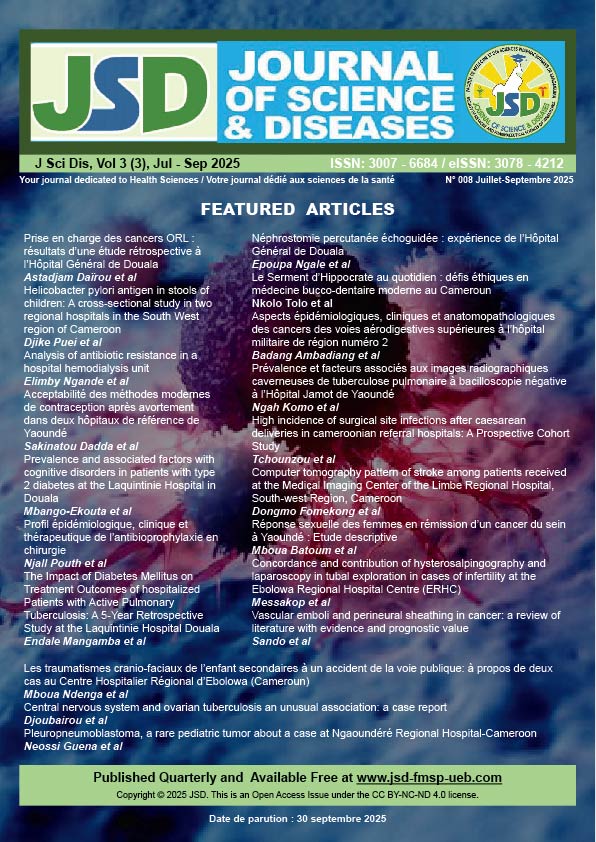Management of Head and Neck Cancers: results of a retrospective study at Douala General Hospital
DOI:
https://doi.org/10.64294/jsd.v3i3.126Keywords:
ENT cancer, management, Douala General HospitalAbstract
Introduction: Head and neck cancers, with a global incidence of 8.8%, account for 5.4% of cancer-related deaths. Due to the functions housed in the head and neck region, their management presents a significant challenge. The aim of this study was to examine the management of head and neck cancers at Douala General Hospital.
Patients and method: We conducted a retrospective cross-sectional descriptive study involving patients diagnosed with head and neck cancers, supported by histological evidence, and treated at Douala General Hospital between January 1, 2011, and December 31, 2020.
Results: Among the 321 patients included, the average age was 48.54 ± 15.78 years, with a sex ratio of 2.27. The most common site was the nasopharynx (48.9%), and carcinoma was the predominant histological type (95.3%). Treatment modalities included surgery, chemotherapy, and radiotherapy. Surgery was performed on 68 patients (21.2%), radiotherapy on 309 patients (96.3%), and chemotherapy on 285 patients (88.7%). The most frequent treatment protocol was concomitant radiochemotherapy, used for 154 patients (49.8%). Chemotherapy was dominated by the cisplatin + 5-fluorouracil regimen. Tumor surgery was total (n=52/68, 76.5%) and extended lymph node dissection was performed (n=41/57, 71.9%). Radiomucositis was the most frequent side effect.
Conclusion: The management of head and neck cancers is predominantly characterized by concomitant radiochemotherapy. Surgery is often total, accompanied by extended lymph node dissection.



